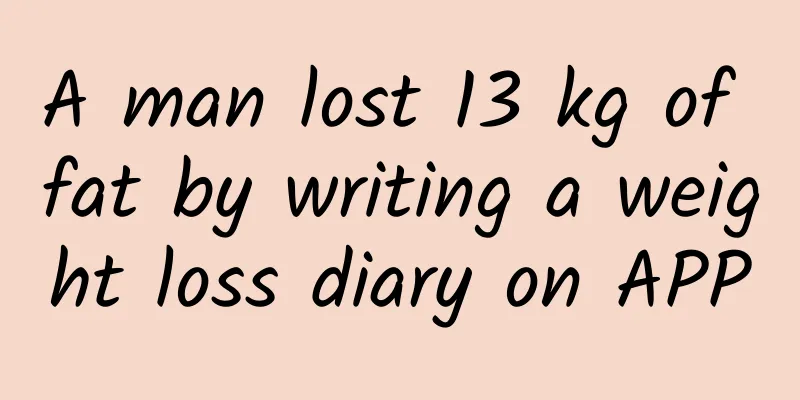Should your knees not go beyond your toes when squatting? Doctor God Answers...

|
Whether the knees can go beyond the toes when squatting is a controversial issue in the fitness industry. An online video teaching squat movements has once again sparked a new round of discussion. In the video, the coach emphasizes that the knees should not exceed the toes when squatting, and a hotly dressed girl demonstrates the movement. This controversial video has caused many netizens and fitness experts to post online, accusing the coach of not preventing their knees from moving forward and wearing so little. With so many experts expressing their opinions, Scott originally thought there was nothing more to add. But, like all knowledge, when you think you know it all, a guru/villager/British researcher will pop up and slap you in the face, making you lose all your confidence. Scott is going to share a study today that will show us whether the knees can go beyond the toes. Here are some squat posture guidelines for reference: Why can't you go beyond your toes? First, let me introduce some basic knowledge. Why did some people say that the knees should not exceed the toes when squatting? It turns out that if the knees move too far forward during squats, the pressure on the knees increases and the hip muscles become lazy and relaxed. (Click here to see why buttocks are so important to men) According to this inference, as long as we keep our knees behind our toes when squatting, we can have a charming butt and save money on buying Viagra. Whether you hurt your knee or hip, squeeze it! ? A 2003 study by Fry et al. suggested otherwise: if you restrict your knees from moving past your toes, yes, you can reduce knee stress by 22%. But you also increase the stress on the hip joint by as much as 1000%. Translated into plain language: Although keeping your knees below your toes can reduce the pressure on your knees by 1/5, you will also increase the pressure on your hip joints by 10 times. That doesn't sound like a good idea! Times change, concepts change In 2012, British scholar Swinton conducted the following experiment to further study the pressure that the squat posture causes on the body's joints. Swinton recruited 12 professional male bodybuilding athletes as experimental subjects. It is worth mentioning that these "white mice" are not easy to deal with. They are monsters with an average age of 27 years old, a height of 180 cm, a weight of 100 kg, nine years of strength training experience, and a maximum squat weight of more than 200 kg. Scott can confidently say that these athletes are among the best squatters in the world. Swinton asked the contestants to use three squat techniques: traditional, powerlifting, and box squat, and used professional equipment to record and measure the contestants' movements. The weights used were 30%, 50%, and 70% of personal best (1RM). Traditional style: The distance between the two feet is narrow, the knees are over the toes, and the center of gravity is forward. (Actually, Scott's personal squatting method is to have both toes parallel and facing forward. I don't know why it looks like this in the photo...) Powerlifting style: Place your feet wide apart, keep your knees no higher than your toes, and move your center of gravity backwards. Box Squat: Very similar to bodybuilding, but with a box added at the back to allow the hips to rest a little (but not to sit down and rest!). The feet are wide apart, the knees do not exceed the toes, the center of gravity is the farthest back among the three, and the upper body is the straightest. So we can roughly know that the traditional squat allows the knees to go beyond the toes. The Powerlifting Style and Box Squat move the center of gravity backward, indirectly preventing the knees from going beyond the toes. So here comes the point, which posture is less likely to cause injury? result The results shocked everyone again: regardless of whether it exceeded the toes or not, the torque borne by the knees was almost the same! In the past, it was generally believed that keeping the knees below the toes would reduce the burden on the knees, but this study disagrees with this statement. All three squat techniques are safe for your knees as long as you perform them correctly. The second more surprising discovery is that past studies have shown that although keeping the knees no higher than the toes can protect the knees, it will sacrifice the health of the hip joints and lumbar spine. But in these 12 bodybuilding athletes, scholars discovered that the bodybuilding style, that is, the squatting method where the knees do not exceed the toes, can actually protect the lumbar spine! The researchers speculate that because previous studies were conducted on amateur fitness participants, when the knee path was restricted and could not move forward, they were forced to use dangerous methods such as leaning forward with their upper body or even bending over to maintain balance. This abnormal compensatory movement pattern will seriously increase the load on the lumbar spine and hip joints. (In order to avoid falling, the athlete in Figure B leans his upper body too much to maintain balance) (Image source: Fry et al., 2003) Relatively speaking, this study recruited 12 elites in the fitness industry. When the knees cannot go beyond the toes, they know how to make adjustments by using a wide stance, external rotation of the femur, and abduction. This clever technique allows them to keep their upper body relatively upright even if their knees don't move forward. Elite bodybuilding athletes know how to use posture to reduce the burden on the waist and knees, allowing them to squat heavy and healthy. Who says that people with strong limbs must have simple minds? In short, people who know how to squat can protect themselves from injury no matter how they squat. However, the researchers also mentioned that torque is not the only culprit for knee joint injuries. The bending angle of the knee joint, the relative displacement of the thigh and calf bones, and the pulling force will also affect the shear force and pressure of the joint. So even though the torque is the same, traditional squats may still be "relatively" more damaging to the knees. (Scott's brainstorm: I think the traditional squat is inherently safe even with the added stress. It's only the wrong technique that makes it dangerous. By the way, did anyone know that sitting can also increase the stress on the spine?) (Although your knees can go beyond your toes, you should avoid this ugly and dangerous stupid squatting method.) There are several additional findings in this paper, which Scott briefly mentions here. In order to avoid going too far off topic, I will not elaborate on this in detail: 1. Traditional squats put a relatively heavy burden on the lumbar spine. 2. Power squats put a relatively large burden on the hip joint (but definitely not 10 times). Conclusion So to summarize, what does this research tell us? 1. As long as the squat posture is correct and the knees do not exceed the toes, it is safe. 2. People with poor ankle joint mobility but good hip joint mobility can consider squatting with the knees not going over the toes (powerlifting style). 3. People with good ankle joint mobility but poor hip joint mobility can try the traditional squat method with the knees over the toes. 4. Relatively speaking, the traditional squatting method causes greater stress on the lumbar spine and knees, while the power squatting method is more harmful to the hip joint. 5. Based on your personal injury records in different parts of the body, you can choose a squatting method that suits you. 6. Under no circumstances should the knees extend "excessively" beyond the toes (dumb squat). The question "Can the knees go beyond the toes when squatting?" is not a true or false question, but a multiple-choice question. Furthermore, you should not ignore other aspects of the squat: foot spacing, neutral spine posture, center of gravity position, type and placement of weights, and degree of forward lean of the upper body. The squat seems simple, but it is actually a science (smoke)~ This article comes from: Dr. Scott's One-Minute Fitness Class ※For more information, please see "Dr. Scott's One-Minute Fitness Class" |
>>: How to effectively reduce body fat?
Recommend
What exercises can control the growth of uterine fibroids?
Moderate exercise can help relieve the discomfort...
What are the causes of Bartholinitis?
What are the causes of Bartholinitis in women? Ba...
7 tips to prevent yo-yo effect and lose weight without belly fat
The 9-day Lunar New Year holiday is coming soon. ...
What should women eat to relieve menopausal symptoms? See what experts say
Women will experience various discomfort symptoms...
Ovarian cysts can cause female infertility
Ovarian cysts are common tumors of the female rep...
The harm of irregular menstruation in women of different ages
Irregular menstruation is a common gynecological ...
What tests should be done for pelvic peritonitis
If a woman suffers from pelvic peritonitis, the h...
Experts take us to understand in detail the dangers of painless abortion
In fact, in life we all know that the harm of p...
Can vaginal candidiasis grow in the vagina?
Can vaginal candidiasis grow in the vagina? 1. Ca...
What should I do if I have vaginal candidiasis three months into my pregnancy?
What should I do if I have vaginal candidiasis th...
Peter Ho teaches people who want to get rid of their fat cards to stay away from metabolic syndrome
Are you a "fat card person" who eats to...
What are the causes of cervical erosion? How to treat cervical erosion in women?
What are the causes of cervical erosion in women?...
What are the symptoms of ovarian cysts? Five symptoms worth noting
What are the symptoms of ovarian cysts that are w...
Is red light atomization good for treating cervical erosion in women? 5 causes of cervical erosion that women must know
Cervical erosion is a very common and frequent gy...
Will there be obvious pain during medical abortion when the pregnancy is more than 40 days old?
Pregnancy lasts about 40 days. If you suddenly do...









